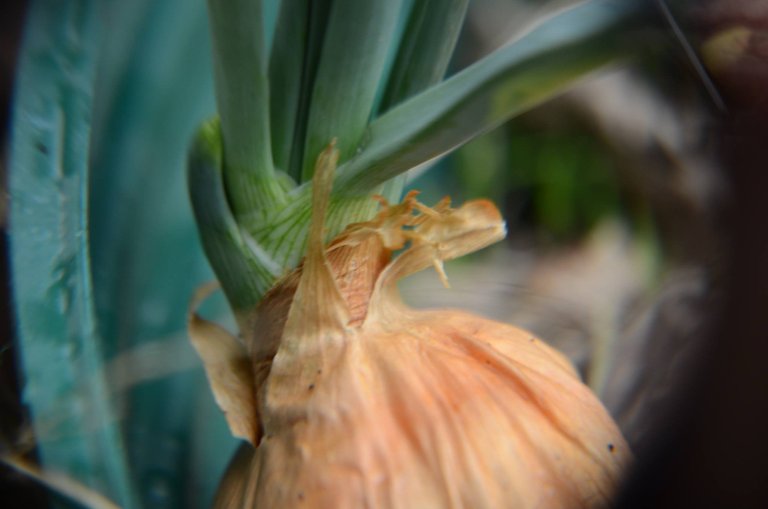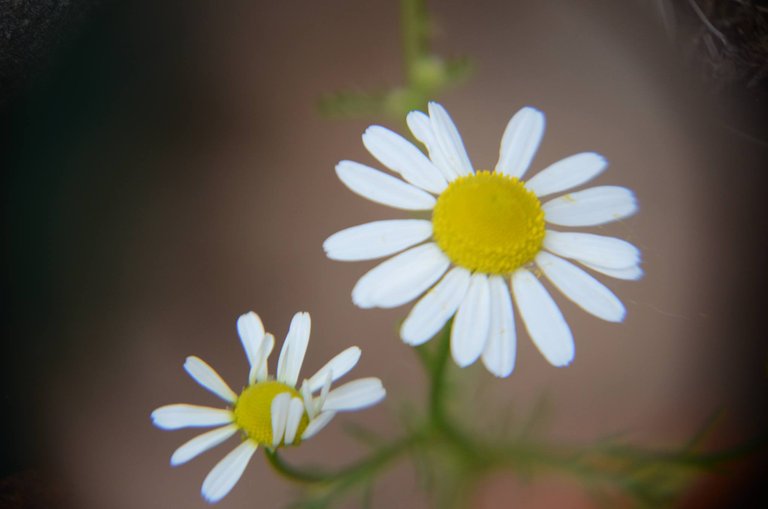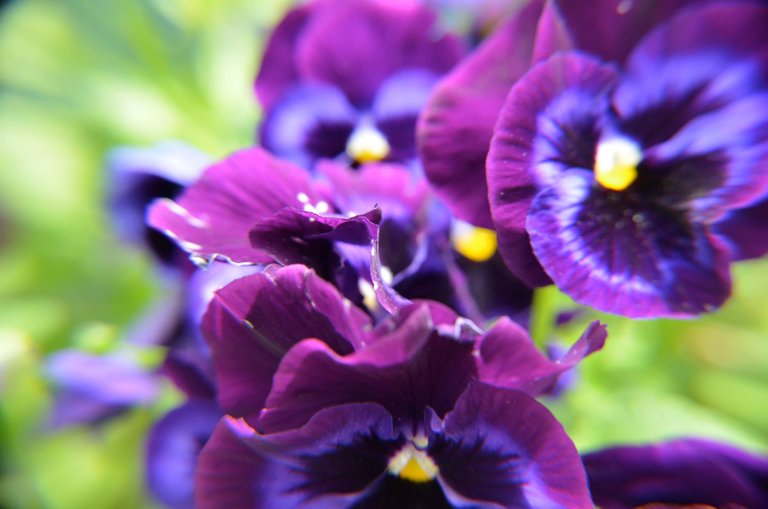
Sprouted Onion, viewed through Macro lens hand-held in front of camera lens. Narrow depth-of-field combined with slight chromatic aberration and vignetting combine to give a "watery" feel.

Chamomile Flower. Macro lens hand-held in front of camera lens gives extremely tight depth-of-field and a natural softness, giving full attention to the flower.

African Violets, with chromatic aberration. Shot with a +10 diopter spherical macro lens hand-held in front of telephoto lens. The extreme curvature of the macro lens introduces chromatic aberration, where light of different wavelengths focuses to different focal lengths, causing the haloing of the purples. In addition, a prismatic effect causes the blue fringing at the petal edges. A red fringing is also present, but is harder to discern against the purple petals.
All photos by Christopher Sanborn. All are are through-the-lens images; no photoshopping or retouching. Shot with Nikon D7000 camera body with Nikon DX Nikkor 18-105mm telephoto lens. Photos licensed under Creative Commons: Attribution. Free to use, but please attribute to original author (me).
Try shooting with your main camera lens reversed, so that the back element is facing your subject. You can do this with two hands but they also make special reversal rings for this purpose. Looking on ebay you can get them cheap, under $10. Most of my macros were taken with reversed 35mm and 50mm lenses. The less focal length, the higher the magnification. If you don't have one already, look into getting a 50mm f1.8 lens. They are very affordable, can make decent reversed macro lenses, and on the DX format are good portrait lenses as well.
Wow that's a really fascinating idea. I'd never heard of doing that before. Thanks for the tip!